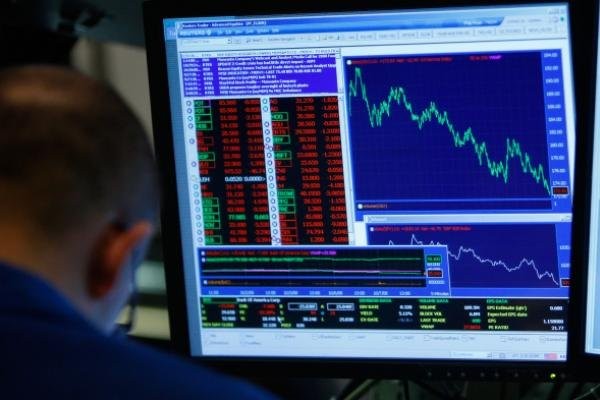How To Fight Inflation With ETFs
Post on: 25 Сентябрь, 2015 No Comment

Dan Weiskopf, a Principal at Global ETF Strategies, manages ETF portfolios for clients and has been doing so since 2004. Recently we sat down with him in order to get his thoughts on inflation and some of the best ways to fight this phenomenon with Exchange-Traded Funds. This is part two of our interview with Dan, for part one of the interview go here .
ETF Database (ETFdb): Lets talk about the tools that are out there for fighting inflation as well as what can be impacted by inflation. It seems to me that most advisors and investors gravitate towards inflation protected bonds as the default way to protect against inflation. But there appear to be some potential pitfalls there, especially considering the limitations of using CPI as a measure of inflation, and therefore anything linked to CPI is somewhat limited. Do you see TIPS as kind of a silver bullet that protects everything, or is it more of part of a complete strategy that can be used to combat inflation?
Dan Weiskopf (DW): Absolutely. Our job is not to fight inflation, but rather to capture its trend by investing along side of it. With that in mind, we see the reversal of inflation as a good thing so long as we understand it and have the tools to benefit from it. The irony is that so many advisors and investors are using TIPS as a “silver bullet solution” is that there are higher correlated assets to inflation than TIPS. In a number of studies we have read, TIPS were only 21% correlated to inflation. Compare this to bank loans which were 66%, and commodities were 63%. Therefore, the simple reality is that there are better investments available for investors to align their goals with inflation than TIPS. Also, we think that a multi-asset tactical approach to investing in inflation is the best way to embrace the issue. In that regard, we look towards certain frontier markets such as Vietnam. Chile and various infrastructure strategies in India and Brazil. However, understanding these markets is obviously critical and carry different risk profiles than TIPS [Beyond TIP: 10 ETFs To Protect Against Inflation ].
We also think that inflation is a dynamic trend and not something that investors necessarily need to be afraid of; especially if what they are investing in has a proven statistical high correlation to inflation and therefore has a high probability of providing a net positive return. Investors do well when trends are consistent and predictable. Assuming that we see a steady increase in inflation this trend could create a favorable investment environment for sectors of the equity markets and commodities. Inversely, a steady decline in bond values could be expected and maintained through the right innovative structured solutions. Of course, access to inflation protection bonds using ETFs in Europe are also available.
Many people think we are talking about 70s type of inflation when we speak about our concerns. While we are cognizant of this possibility, our enthusiasm comes more as an outgrowth of our work in ETF space and the fact that if this was to occur investors would now have better tools to maintain their lifestyles than during that period.
ETFdb: So you recently put together a study and noted that some of the asset classes and ETFs that will be impacted by inflation are obviouslike commoditiesbut that inflation will ultimately impact a wide variety of asset classes. What are some of the asset classes that maybe people do not consider the impact that inflation may have on the value of those securities, either positive or negative?
DW: We recently wrote a piece we titled “100 ways to be long the Inflation Trend”. This study outlines our research on how to invest to benefit from inflation and breaks down the 100 or so ETFs into 10 categories and is available upon request. Many people fear inflation, but as tactical managers our answer is a dynamic approach. What may be working today is subject to review tomorrow according to our process. We don’t believe in “silver bullet” or set it and forget it strategies. Yet, there are certain investments that by the nature of their structure are logically correlated to inflation. Bank loans (BKLN ) which have a critical variable component are appropriate as an investment hedge. Similarly, very short term fixed income securities would be expected to hold their value as rates increase. In an environment, where emerging markets debt is benefiting from steady high interest rates, locally denominated currency debt (ELD or EMLC ) can also benefit from a weaker dollar [Definitive Short Dollar ETF Guide ].
It is difficult for us to predict which asset categories we would expect would do well with inflation long term in part because such an outlook is dependent upon where in the inflation cycle we are measuring. Clearly selling short the long bond or owning inverse bond funds present an opportunity to benefit from rising rates. We spoke earlier about retirement nest eggs. We are very concerned by the inevitable outcome of what a move of 150-200 basis points would do to many people looking at retirement bond portfolios. For so long investors have been dulled into believing that they will be comfortable knowing that their bond portfolio is down 10% so long as they can continue to clip the 3% coupon every month. We think this strategy is skewed by a 30 year bull market in bonds and ultimately investors will be very disappointed.
It is so difficult at this point in time to really predict what kind of inflation we are going to be looking at because we are in uncharted waters at this point. We are hopeful that the rate of CPI remains low in the range of 4-5%, but given all the uncertainty around inflation there is anything but certainty that we won’t have a 70s type situation. And as we have been saying all along, the real rate is arguably much higher.
ETFdb: So what do you recommend? How can advisors use ETFs to protect their client portfolios against inflation? What are some of the strategies out there, whether it is a single strategy or a combination of strategies that you find most appealing in the current environment?

DW: We recently launched a strategy called Positive Return Inflation Strategy (PRIS). Since everyone is in uncharted waters on the impact of the global inflation trend and how different agendas may run in conflict with one another, we believe that advisors and investors have to be positioned in a tactical methodology that will adjust to change and which is liquid. Tactical is especially important when investing in sectors, emerging and frontier markets. We believe that the methodology that we developed in 2004 has multiple applications and by narrowing the spectrum to one matrix we call inflation we have developed a focused strategy that we expect will dynamically adjust to the different stages of inflation. We believe this strategy can be viewed as a hedge or adjunct to a bond portfolio. As you may have figured out from our interview we are particularly sanguine on long term Treasury bonds [Recapping Impressive Innovation In Bond ETFs ].
Regardless of a person’s view on the safety of principal when they hold a US treasury, ultimately, if we are even partially right, the return that they will earn from a 7-10 year Treasury will almost certainly be negative. However, we are realists and as my father use to say the market will make you humble. My point is that while we feel very confident in our long term outlook on inflation. Putting ego aside and using process to define our actions, we expect to achieve alpha over inflation as defined by CPI or inflation caused by accelerating or decelerating growth. We expect that by using a focused, highly correlated process managed by supply and demand returns, it will be less volatile than if an investor just allocated money to a combination of commodities and TIPs. And in this way, we hope to accelerate when inflation is evident and not hurt anyone when or if it turns out to be benign.
[For more ETF Q&As, sign up for our free ETF newsletter .]
Disclosure: No positions at time of writing.














